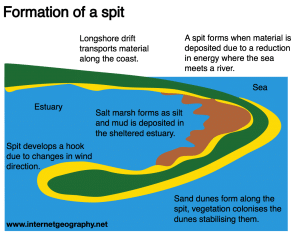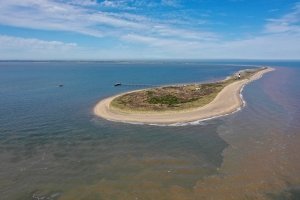Landforms of Coastal Deposition Flashcards
Find out more about landforms of coastal deposition.
A spit is an extended stretch of beach material that sticks out to sea and is joined to the mainland at one end.
Find out more about landforms of coastal deposition.
Offshore bars form when sediment is transported on and off a beach. Destructive waves remove sediment from the beach and form the offshore bar.
Find out more about landforms of coastal deposition.
A sand dune is a small ridge or hill of sand found at the top of a beach, above the reach of the waves.
Find out more about sand dunes.
Onshore winds (winds blowing inland from the sea) cause the formation of sand dunes at the back of a beach. Sand is deposited by the wind around an object such as a rock, forming embryo dunes. Over time, vegetation such as marram grass stabilises the sand dunes forming foredunes. As the vegetation around the foredunes decomposes nutrients are released and soil begins to form. A wider range of plants are then able to colonise the dunes.
Find out more about sand dunes.


